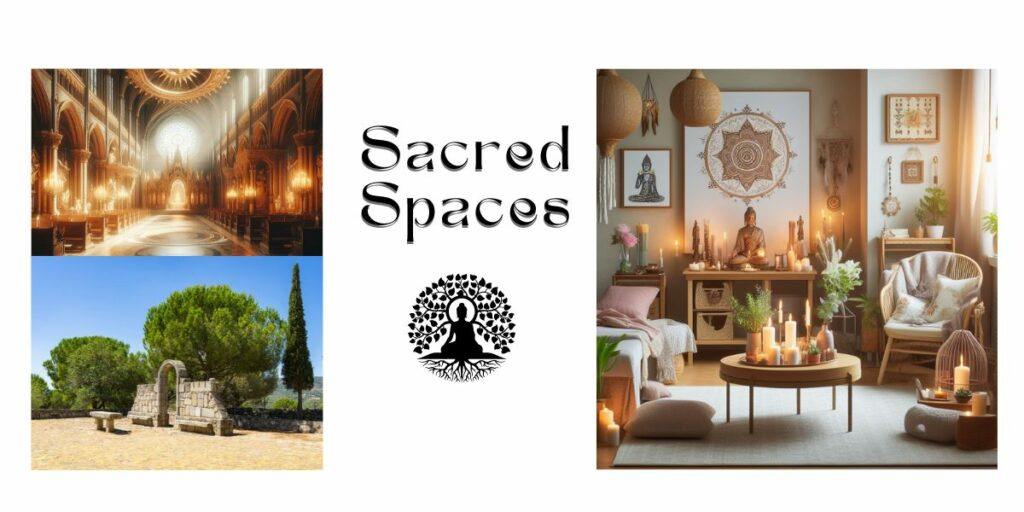
When I say, ‘sacred space,’ you might envision a grand cathedral or a serene forest clearing. But what if I told you that sacredness can be found right where you are, in your own home? A sacred space is essentially a designated area that holds spiritual significance. It’s a personal sanctuary you carve out, where you can connect to your inner self, your beliefs, and or a higher power.
These spaces aren’t bound by one single purpose but are versatile in their use. Whether it’s a corner for quiet contemplation, a nook for nurturing your creativity, or a spot for deep meditation and prayer, the sacred space serves as a refuge for your soul. It’s important because it offers you a reliable touchstone, a place to return to for grounding and centering amidst life’s chaos.
Creating a sacred space is also about acknowledging the role of spirituality or mindful practice in our lives. It’s a physical representation of our commitment to these practices, serving as a constant reminder of their importance.
Now, the idea of designing a spiritual corner might seem daunting, but don’t worry too much about making it ‘perfect.’ What matters is that it feels right for you. In the upcoming section, I’ll walk you through some steps of selecting a designated space
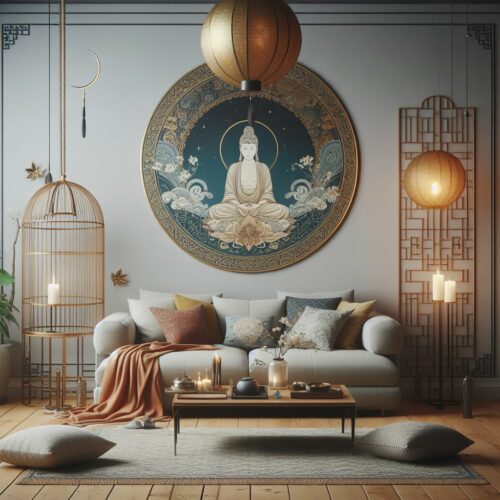
There are many ways to select an area in your home or surrounding space which can serve as a sacred space. Some individuals create alters facing specific direction, as that holds meaning to them. For example, the East is the direction of the sunrise and tends to be a great source of connection to Spirit/God for many spiritualists. Another well known method is feng shui.

Feng shui is a traditional practice that originated in ancient China. It uses energy forces to connect an individual or harmonize an individual with their surrounding environment. The term translates to “wind-water”, which corresponds to 2 element air and water; both of which can be seen as a type of energy flow. How the elements flow, effects how areas in your space can feel. Feng shui is a wonder concept that warrants it own article. So, for now, suffice it to say, find a space that feels good to you to set up your sacred space.
Preparing Your Sacred Space: Purification and Personalization
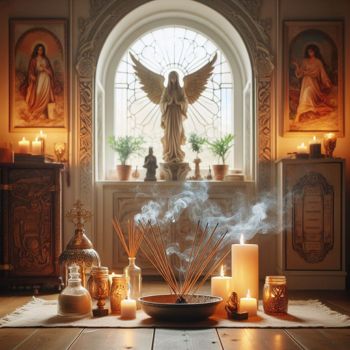
Have you ever walked into a room and felt an instant sense of calm? That’s the goal when purifying or cleansing a space for your spiritual needs. Purification is all about clearing negative energies and creating a clean slate. You can achieve this goal by using smoke by smudging or burning incense in the space and surrounding area you select for your sacred space.

Smudging, in essence is like incense, it is a cleansing/purification ritual that uses the smoke of select herbs and plants to remove negative energy from a space or person. Common scents used for purification are sage or palo santo. Other types of incense that can be used are, stick incense, also known as joss stick, cone incense as well as powdered incense.
Sound vibrations from bells or chants, or simply open the windows and letting fresh air in are other great ways of purifying a space. Remember, the process is as significant as the intention behind it, so do it with mindfulness and dedication. Personally, I like to follow what my intuition tells me to use to purify a space, which usually involves the four elements of earth, wind/air, fire, water.

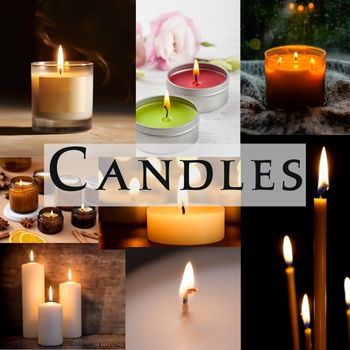
My process often includes, lighting a white candle, anointed with Holy oil or olive oil, set with the intention to bring light to my space. This fulfills the element of fire. Depending on the type of flooring I am working with, I will either mop the floor or use a spray bottle mixed with spiritual floor washes or simply a little bit of ammonia in the water, pray over it and then mop or spray the walls or area nearby. This fulfills the element of water.
The last 2 elements are incorporated by opening my front door or a window and visualizing the energy leaving through it, or the air pushing the negative energy out and lighting incense. Incense represents the element of earth. I usually use sage and or palo santo to cleanse, both of which represent earthly aspects. There are many other types of incense that can be used based on your intension when cleansing.
In truth, I should have perhaps said there are five elements, however, this last element is really about you, your intention and commitment to this process. The love and focus you put into the act of cleansing your space, allows you to begin the energetic transformation with clarity and purpose. It charges all the other elements and, in a manner, guides them to fulfill the purpose you set out for them. It
Once the space feels energetically lighter, it’s time to make it your own. Choose items that genuinely speak to you, whether that’s crystals for those into lithotherapy, tapestries for the aesthetically inclined, or a comfy cushion for long meditation sessions. The focus here should not be about following a set template, but rather creating a space that is deeply personal and should reflect your inner being. That said, a few considerations come to mind.
First, plants can be wonderful companions in your sacred space, bringing life and a touch of nature indoors. Second, images or statues of figures you admire or feel connected to can serve as sources of inspiration. And third, items like journals or art supplies can encourage expression and introspection. Integrating elements that encapsulate tranquility and meaning for you are key to personalizing your sacred space. Another great element to consider is an altar.
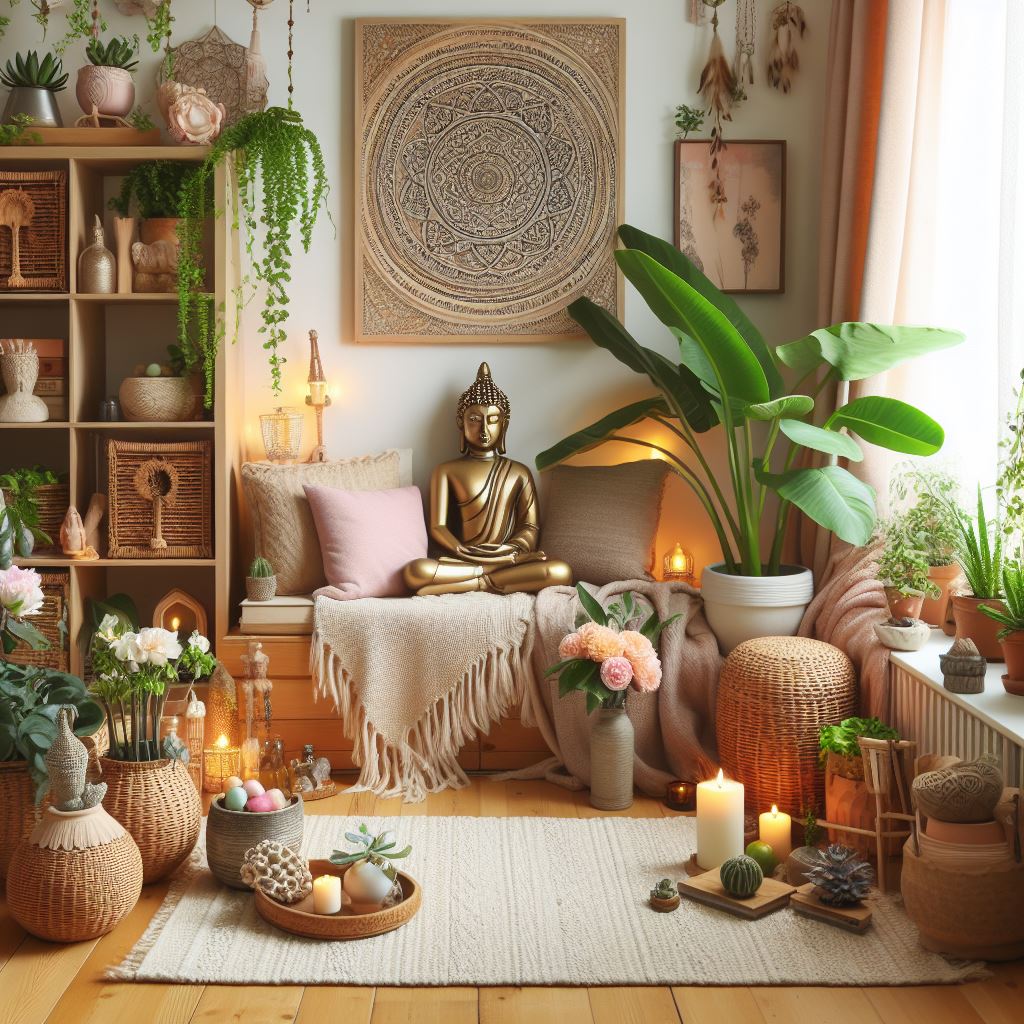
Elevating Your Sacred Space: The Power of Consecration and Altars
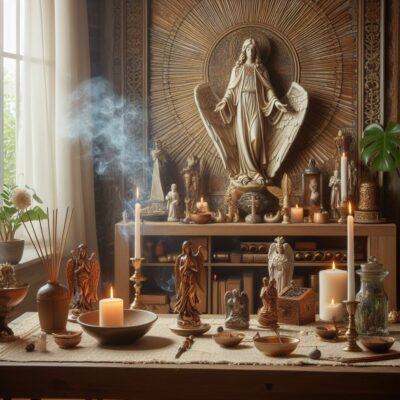
Consecrating your sacred space is a meaningful process. It’s setting aside this particular spot as special, distinct from the other day-to-day aspects of your life. Think of consecration as a formal declaration that this area is dedicated to your spiritual journey.
To get started, decide on a ceremony or ritual that speaks to you. This might involve lighting candles, saying a prayer, or even just spending a few quiet moments to acknowledge the space’s purpose. Regularly engaging in this practice can reinforce the sanctity of the area.
If you have set out behaviours you want done within the space, then honor that. For example, if you feel being bare footed is important for you in this space, then action that and ideally remove your shoes before entering or dedicate specific shoes or slippers to enter your sacred space. If you feel the space has grown heavy, then repurify. For your sacred space to serve it purpose, consider purifying your sacred space regularly. I recommend repurifying your sacred space at least once a month and, more if you feel the energy has changed within it.
Now let’s talk about altars. An altar can be a central piece of your sacred space. Contrary to some misconceptions, an altar isn’t necessarily religious. It’s a physical representation of what you’re seeking – whether that’s calm, inspiration, or connection.
Setting up your altar should be a personal and intuitive process. Choose items that have a deep meaning to you: stones, photographs, plants, or books. The key is to select things that uplift you and embody your spiritual intentions.
I believe in God/Spirit but I am not religious, as such I tend to use elements on my altar that for me represent the limitlessness of God and my understanding of Sources creative powers as seen in the elements. I use 7 days candles; I have a decorative incense burner to burn my stick incense. I surround my altar with 7 crystals that represent stones for 7 chakras and a glass of water that I change regularly. Periodically, I also do a basket of fruit as a token of thanks. This is what feels good and right for me. Enjoy the process of discovering what feels good to you.
There are no hard and fast rules for what goes on your altar, but balance is crucial. Don’t overcrowd it; each object should have room to ‘breathe’ and hold its significance. And as your journey evolves, feel free to add or remove items from your altar.
Cultivating Spirituality at Home: Advantages Of A Personal Sanctuary
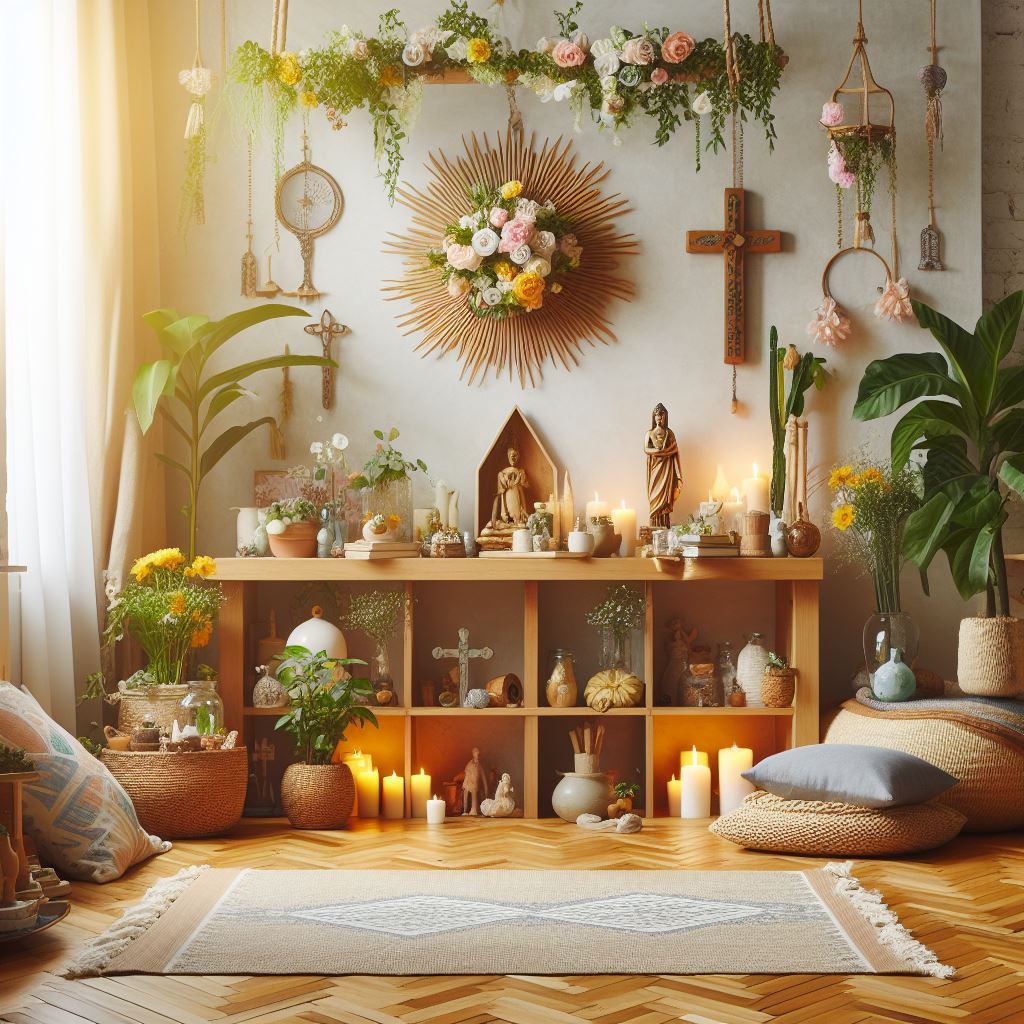
You’re going to find out about the deeper aspects of having a sacred space at home. It’s not just an area where you keep some meaningful items or occasionally meditate. It’s a transformative zone that fosters spiritual grounding and personal growth. Let’s explore why it’s such a powerhouse for your well-being.
A dear friend of mine, who has since passed on, had this wonderful concept she used to use. Whenever she would feel negative energy come upon her, sometimes brought on by life stressors, or interaction which certain people, when she’d have enough of being in that lower vibrational state, she would just say, “Change of State”. Those words for her would mean that she was aware of and acknowledged the lower vibration, and it was time to shift gears.
I share this with you to suggest seeing your sanctuary as the place you can change your state. If you intend your sanctuary to be that space where you change your state, then your state will shift whenever you go in your sacred space. This does not mean you will always ways go in feeling good, but ideally you will come up feeling vibrational better. Your body will recognize that when you go in there, the purpose is to be present and align or raise your vibration.
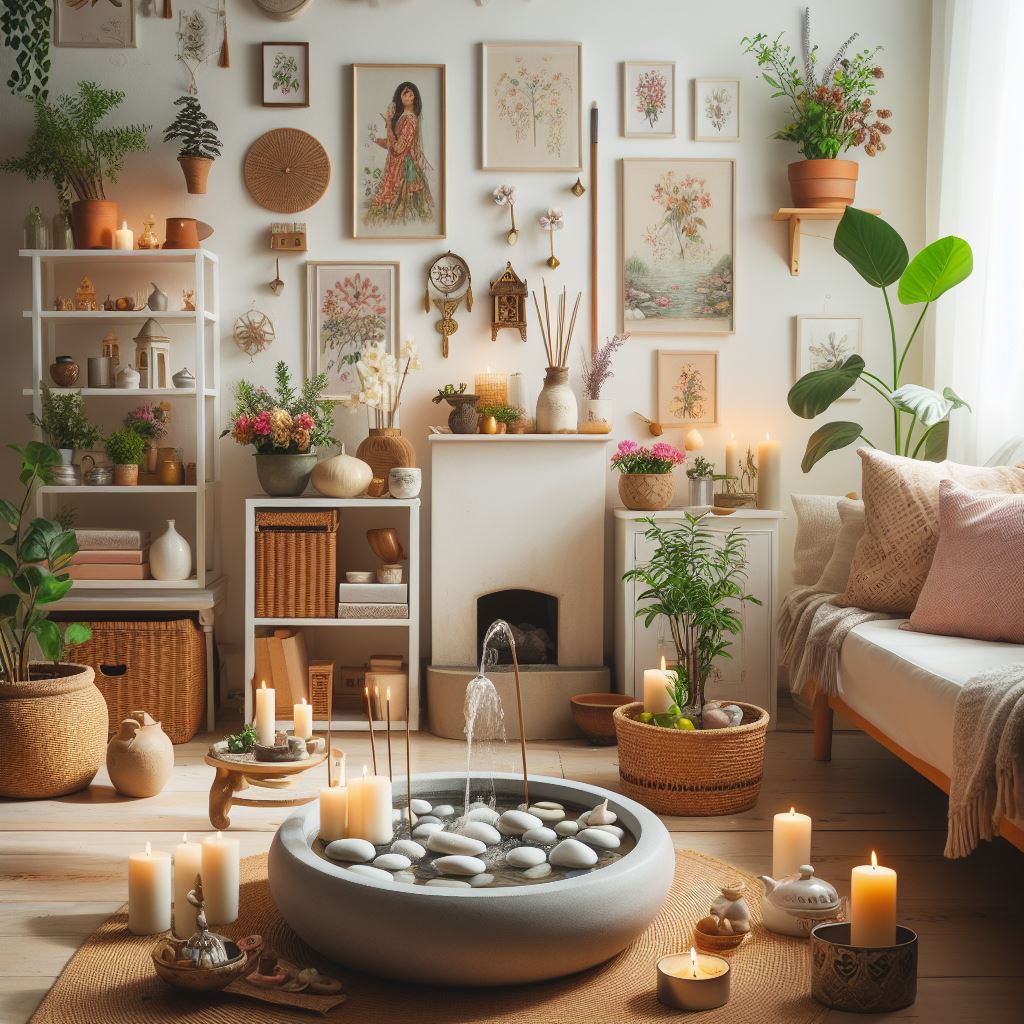
Sacred spaces are known for their psychological benefits, offering a refuge from the daily grind. This dedicated spot allows for introspection and contemplation, helping you de-stress and find solace in your hectic schedule. Having a visual and physical reminder of your spiritual journey can be incredibly motivating.
Regularly engaging with your sacred space can increase mindfulness. This isn’t just about being aware of your surroundings — it’s also about gaining a deeper insight into your thoughts and emotions. An everyday activity like lighting a candle or pausing for a brief meditation can help you cultivate a habit of mindfulness.
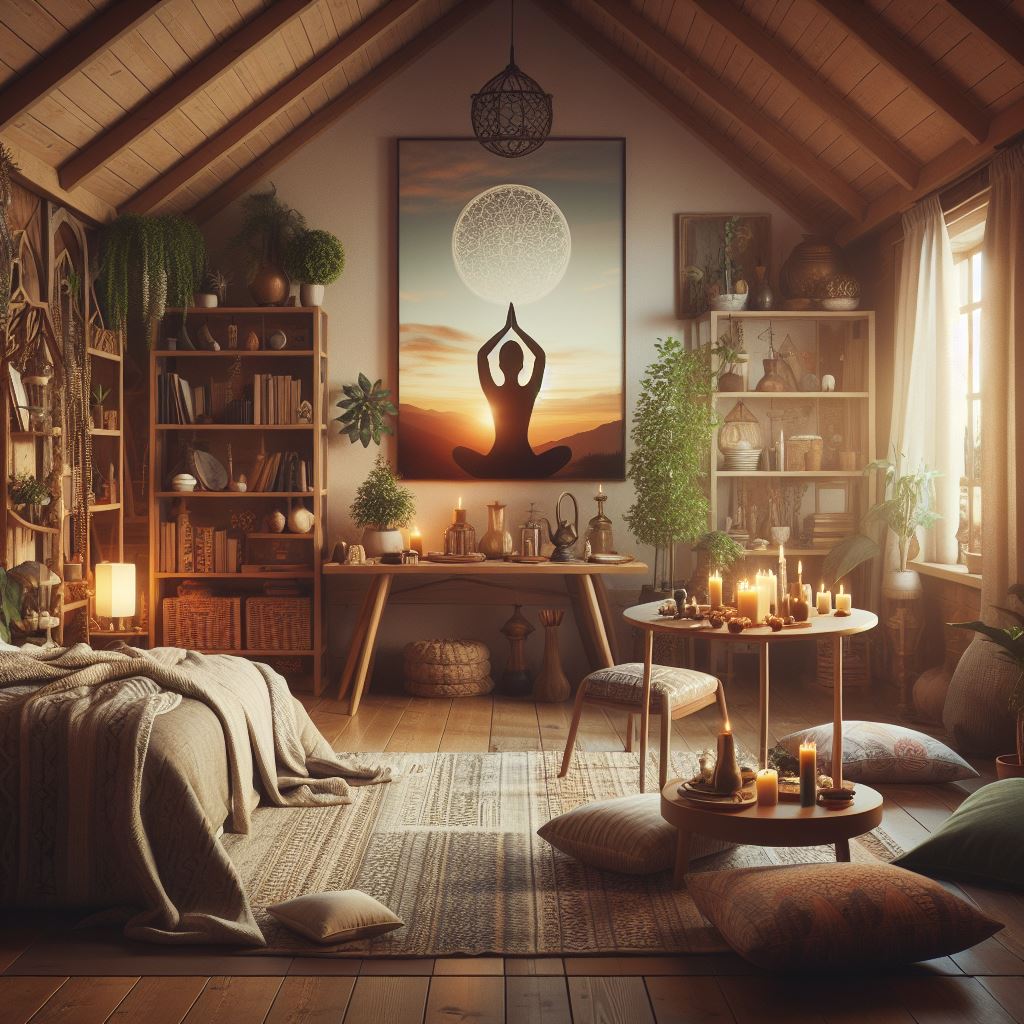

A sacred space can be a beacon for self-care and mental health. Choose something that resonates with you, whether it’s a particular scent, sound, or visual element, to make this area truly yours. By investing in this space, you’re also investing in yourself, acknowledging the importance of your spiritual and emotional needs.
I really hope that you embrace the idea of creating and nurturing your sacred space at home. Remember, your first attempt doesn’t need to be your last. You can always adjust your approach down the road as your needs and feelings evolve. So, enjoy the journey of creating a sanctuary that reflects your inner self and feel the positive change it brings to your life.
Love & Light being sent your way!
~Nadany


